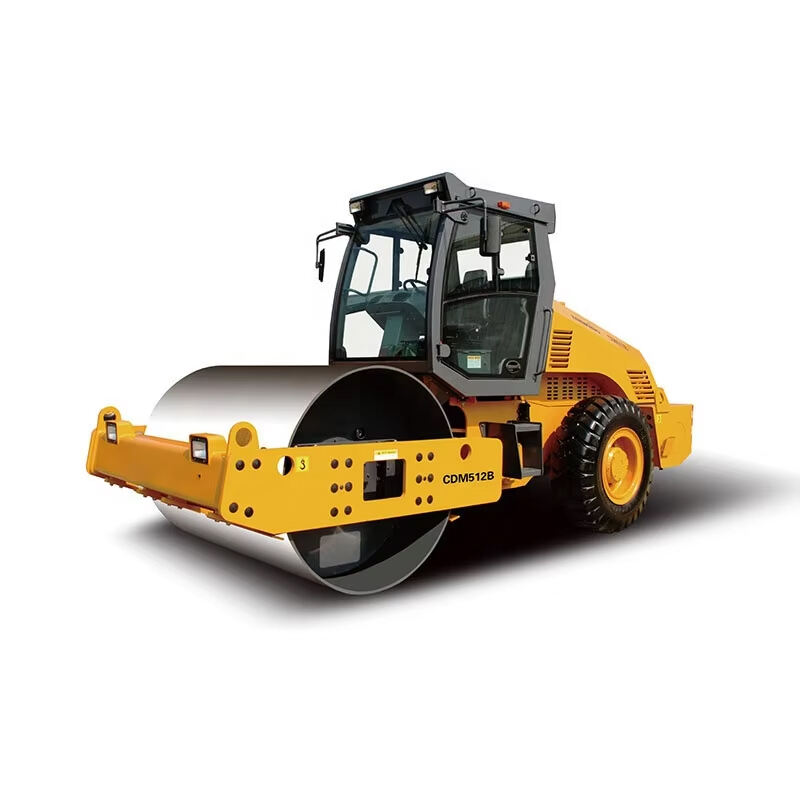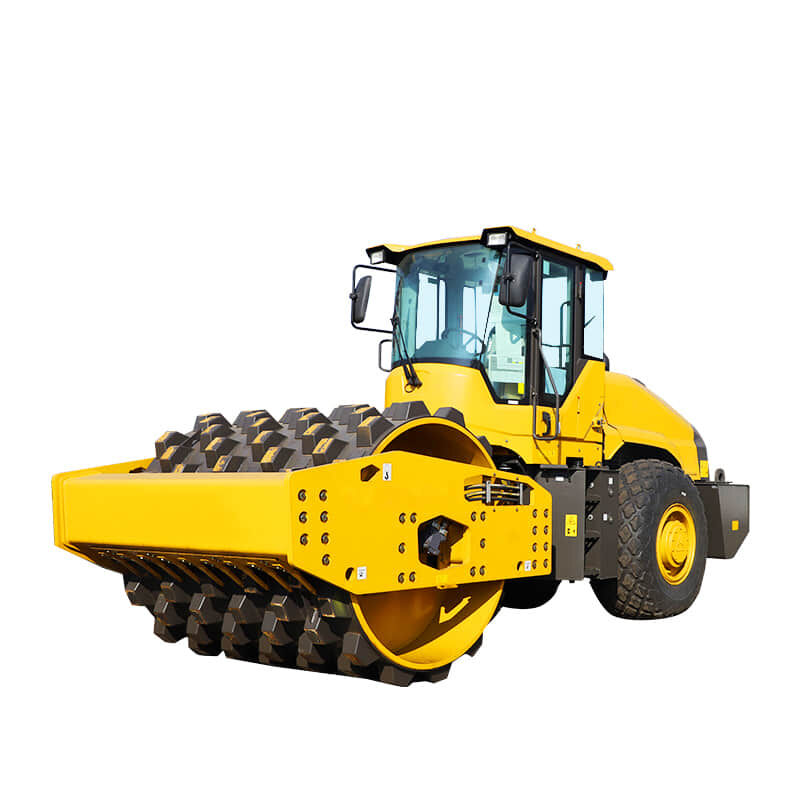I. Product Introduction
Roller compactors, also known as rollers, are essential heavy-duty construction machinery widely used in road construction, building foundations, and other earthwork projects. They are designed to apply pressure to various surfaces, such as soil, asphalt, and gravel, to compact them and achieve the required density and flatness. Generally, rollers consist of a chassis, a compaction drum or wheels, an engine, and a control system. The compaction mechanism can vary depending on the specific type, including smooth drums for asphalt compaction and vibratory or pneumatic systems for different materials. Their versatility and crucial role in ensuring the quality of construction make them an indispensable part of the construction industry.
II. Product Advantages
- Good Energy-saving Effect
-
- Efficient Power Transmission System
Rollers are equipped with advanced power transmission systems that minimize energy losses during the transfer of power from the engine to the compaction components. High-quality gears and shafts are precisely engineered to ensure smooth operation and efficient power delivery, reducing unnecessary energy consumption. For example, in some models, the optimized gear ratios allow the engine to run at its most efficient speed range while providing sufficient torque for the compaction drum, thus saving fuel.
-
- Variable Frequency Drive Technology
Many modern rollers adopt variable frequency drive (VFD) technology for the compaction drum or wheels. This technology enables the speed of the compaction elements to be adjusted precisely according to the actual working conditions. When less compaction force is needed, the speed can be reduced, and the power consumption is accordingly decreased. By automatically adapting to different compaction requirements, VFD technology significantly contributes to energy conservation.
-
- Energy Recovery and Utilization
Some rollers are designed with energy recovery mechanisms. During the braking or deceleration process, the kinetic energy that would otherwise be wasted is converted and stored for reuse. For instance, in certain vibratory rollers, the energy generated by the vibration system during braking can be recovered and fed back to the power system, reducing the overall energy demand from the engine and improving the energy-saving performance.
- High Degree of Intelligence
-
- Intelligent Compaction Control
Rollers are equipped with intelligent compaction control systems that can monitor and analyze various parameters in real-time, such as the compaction degree of the surface, the speed of the roller, and the vibration frequency. Based on these data, the system can automatically adjust the compaction force and the working mode to ensure uniform and optimal compaction. For example, if the detected compaction degree in a certain area is insufficient, the system will increase the vibration intensity or the pressure on the drum to improve the compaction effect.
-
- Remote Monitoring and Diagnosis
With the help of advanced communication technologies, many rollers can be remotely monitored and diagnosed. Operators or maintenance personnel can access the roller's operating status, including engine parameters, hydraulic system conditions, and compaction data, through mobile devices or computer terminals from a distance. In case of any abnormal situation, the system can send out alerts in time, enabling quick troubleshooting and minimizing downtime.
-
- Automated Operation Modes
Some rollers offer automated operation modes. For instance, they can follow a preset route for compaction, automatically adjusting the speed and compaction parameters according to the designed path. This not only improves the work efficiency but also reduces the dependence on manual operation, ensuring more accurate and consistent compaction results.
- Convenient Maintenance
-
- Easy-to-access Components
The design of rollers takes into account the convenience of maintenance. Key components such as the engine, hydraulic pumps, and filters are located in accessible positions, making it easy for maintenance staff to conduct inspections, replacements, and repairs. For example, the engine compartment is usually designed with large openings and removable panels, allowing technicians to reach the internal parts without much difficulty.
-
- Modular Design
Rollers often adopt a modular design concept. Each functional module, like the compaction system, the power system, and the control system, is relatively independent. This means that if a certain module has a problem, it can be replaced or repaired separately without affecting the operation of other parts. It simplifies the maintenance process and reduces the time and cost required for maintenance.
-
- Maintenance Reminder and Guidance
Most rollers are equipped with maintenance reminder systems that can notify the operator or maintenance team when routine maintenance tasks are due, such as oil changes, filter replacements, and component inspections. Additionally, detailed maintenance manuals and on-board guidance systems are provided to help maintenance personnel understand the correct procedures and methods for maintenance, ensuring that the maintenance work is carried out accurately and efficiently.
III. Product Excellent Cases
- Road Construction Project in City
In a major road construction project in City , several rollers of different types were used. The smooth drum rollers were mainly responsible for the final compaction of the asphalt pavement. Their precise control systems ensured that the asphalt surface was compacted to a high degree of smoothness and density, meeting the strict quality standards for urban roads. The intelligent compaction features allowed the rollers to adjust their operation parameters in real-time according to the varying thickness and material conditions of the asphalt layer, resulting in a uniform and durable road surface. During the construction process, the energy-saving technologies of these rollers also played a significant role. By optimizing the power usage and recovering energy during braking, they reduced fuel consumption and operating costs while maintaining excellent compaction performance.
- Industrial Park Foundation Project
For the foundation construction of an industrial park, vibratory rollers were employed. These rollers were used to compact the soil layers to provide a solid base for the subsequent construction of factory buildings. The high-intelligence level of the rollers enabled them to accurately monitor the compaction degree of the soil. They could automatically increase or decrease the vibration frequency and compaction force based on the soil's moisture content and density requirements. This ensured that the soil was compacted to the appropriate level, preventing future settlement issues. Moreover, the convenient maintenance design of the rollers made it easy for the on-site maintenance team to perform regular checks and quick repairs when needed, minimizing the impact on the construction progress.
- Highway Expansion Project
In a highway expansion project, a combination of different rollers was utilized. Pneumatic rollers were used for the initial compaction of the subgrade to evenly distribute the gravel and improve its density. Then, vibratory rollers took over to further compact the soil and gravel mixture. The rollers' remote monitoring capabilities were crucial in this large-scale project. Supervisors could remotely monitor the operation status of multiple rollers simultaneously, ensuring that each roller was working properly and that the compaction work was carried out in an orderly manner. The energy-saving and maintenance-friendly features of these rollers also contributed to the overall success of the project by reducing costs and ensuring the smooth progress of the construction.









